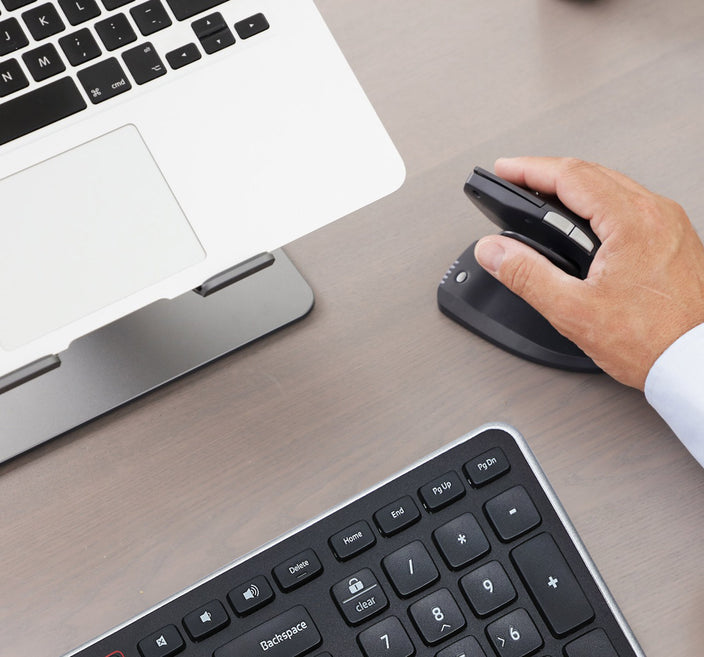Numerous things have changed in recent years, not least how we work in the office. For many, it has changed from open office environments to a home office space at the end of the dining table.
Although more and more people are returning to the office this year, many remain in the home office. Either in whole or in part. If you return to the office this year, you will encounter a change in everyday life you got used to during the pandemic.
This is a new standard for office work. We will be able to do some of the things we have missed in the home office. Small talk at the coffee machine, lunch with colleagues or a good round of professional exchange. Simultaneously, several new things and initiatives will become part of everyday life in the office.
Eight things that become part of the new everyday life in the office
1. Hygiene and distance
Washing hands, disinfecting, and keeping a reasonable distance from each other has become a habit and a regular part of our daily lives. We almost wrinkle our noses at how it used to be. It is difficult to imagine that the new habits will not continue in the new office environment.
The disinfectant dispensers will most likely continue to be found at various contact surfaces in the office - especially at the entrances and in the canteen. Just like most people will pay more attention to cleaning and tidying up after themselves.
In addition, we can expect that we will automatically keep more distance from each other - both at the desks and in the meeting rooms. Here, we will be more aware of whether there is enough space for all participants when booking meeting rooms.
2. Hybrid workplaces
A study by the Danish analysis and consulting company Kantar Gallup shows that productivity has been stable during the long periods of working from home. In some cases, it is even estimated that productivity has increased. Therefore, one can imagine that it will be expected with a mix between remote work and office work.
The workplace thus becomes a hybrid, where you combine all the benefits of working in the office and remote work, respectively.
According to Cushman & Wakefield and Prior+Partners, we will also see several smaller office communities where you can drop in and do your tasks as an employee with remote work.
Such offices will typically be closer to the employees' homes to avoid the drive in the morning traffic.
Also read: Ready for the hybrid workplace?
3. More technology and innovation
The more employees working remotely, the more empty desks will be in the office. As such, there is no need for the same number of desks as employees.
To use space and desks more efficiently, more companies will look at the possibilities of shared desks. Here, it will be companies that make it easy for employees to choose both one and the other that will succeed with hybrid jobs of the future.
Companies like IBM and EY are some of these that already embrace the hybrid version of office work well. They provide employees with a flexible solution, and IBM has, among other things, developed a policy for remote work so that all guidelines are clear.
Also read: Is the equipment in order? Setup for your flexible workstation
Policies are one way to go about things. Apps are another. Apps like Parkanizer and Officespace offer solutions for precisely the shared desk. They let employees book their desks in the office, thus ensuring room for the individual when they arrive. And at the same time, the workplace has control over the number of employees in the office that day.
5. Multiple digital meetings
Another thing that comes in continuing the hybrid workplace is that we will continue to see many digital meetings. Especially the smaller meetings where a trip across the country for just 60 minutes of conversation suddenly seems exaggerated and will be permanently replaced by online versions.
We have become accustomed to digital meetings, showing us that not all meetings need to be held physically to get results.
With the many digital meetings that have taken place during the long periods of homework, we now have reasonable control of the technical part with the camera, screen sharing, mute/unmute, etc. Since we do not have to spend time getting to grips with the technique and avoid the transport time, we can quickly get on with the tasks and act on the actions from the meeting. As such, meetings will be more efficient.
6. Better collaboration opportunities across locations
The increase in digital meetings and online work has made us better at collaborating across locations. It is not just about better microphones and cameras in the meeting rooms, but about the possibility of using digital whiteboards and the other tools, where you can collaborate online using the same elements. Something that is heavily used with brainstorming and other explorative tasks.
You no longer have to sit in the same room to collaborate to create results, develop, and be innovative.
7. IoT technology that increases productivity
To ZDNet, Richard Kauntze, the British Council for Offices CEO, says that it will become increasingly popular to use innovative technology and other measures to improve everyday office life. It will help attract employees to spend more time in the office.
The technology adapts to the employees, so it is the whole office experience that is improved. It could be smart LED light that automatically adapts to the temperature in the office or the natural daylight.
It enhances the excellent office experience for employees, and it impacts productivity and job satisfaction. It is a win-win for the company and employees.
8. The office as the social gathering place
Although a large part of the work for many will take place as remote work away from the office, the physical office will still be the gathering place for social and knowledge sharing.
However, it will be on new terms, as you can see in the previous points. The cosy talk at the coffee machine and lunch in the canteen will still make the office the focal point of the social aspect of life as an office worker.




